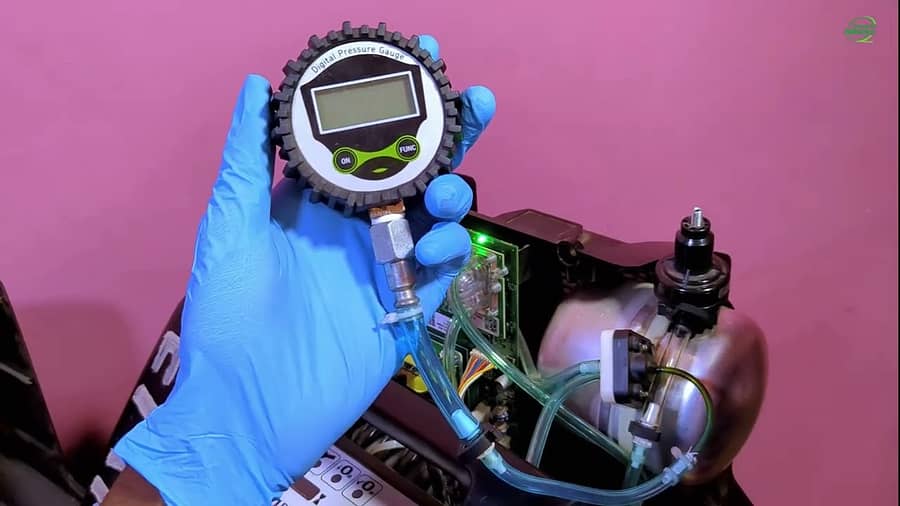Objective and Scope
The pressure inside the product accumulator tank is a vital sign of an oxygen concentrator’s health, offering a direct window into the performance of the pressure swing absorption system. This document provides the protocol for conducting a tank pressure test on a DeVilbiss 525 oxygen concentrator. This powerful diagnostic procedure allows a technician to use a single metric to swiftly and precisely diagnose underlying issues with the oxygen generation circuit.
Required Equipment and Safety Precautions
Required Equipment
- T25 screwdriver
- Calibrated pressure gauge
- Pressure test assembly with an appropriate adapter
Safety Precautions
Safety Warning This procedure should only be performed by qualified biomedical professionals. Disconnect the device from mains power while opening the cabinet and connecting test equipment. Follow all standard safety protocols for medical equipment service.
Test Procedure
- Open the concentrator cabinet using a T25 screwdriver.
- Connect the pressure gauge assembly to the test port, which is located on the manifold of the accumulator tank.
- Power on the concentrator and set the flow rate to its maximum of 5 liters per minute.
- Allow the unit to run for approximately five minutes to ensure the system is fully stabilized before taking any readings.
- Observe the pressure gauge. The pressure is expected to rise and fall in a consistent rhythm with each cycle of the rotary valve.
Interpretation of Results
This test provides hard data that supports specific diagnostic conclusions, eliminating guesswork.
Baseline for a Normal System
- System Identifier: This protocol applies to a standard low-pressure DeVilbiss 525 system, which can be identified by its white-colored manifold top.
- Normal Operating Range: At an altitude of around 900 meters, the pressure should cycle between approximately 16 PSI and 25 PSI.
- Normal Pressure Swing: A consistent pressure swing of about 3 PSI between the high and low points of each cycle is expected.
Diagnostic Table
| Observed Symptom | Potential Root Cause(s) |
| Overall pressure is consistently lower than the 16-25 PSI range. | Clogged filters restricting airflow; A weak or failing compressor that is unable to generate sufficient pressure. |
| Pressure drops significantly below the normal range during cycle changes. | Leaking check valves that are allowing gas to flow backward. |
| Pressure swings are erratic or inconsistent (not a steady ~3 PSI swing). | A problem with the rotary valve or its electrical connection. |
Video Resource
A comprehensive video guide has been created to provide a clear, visual walkthrough of this essential diagnostic procedure, including the correct interpretation of the pressure readings.
Watch the full diagnostic video here:

